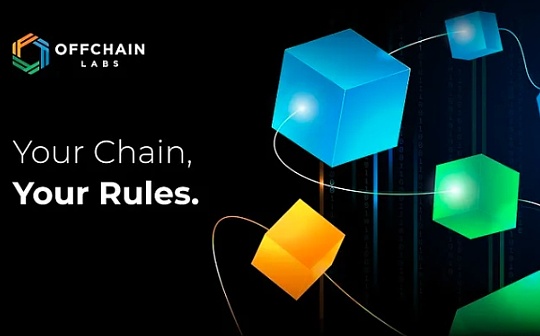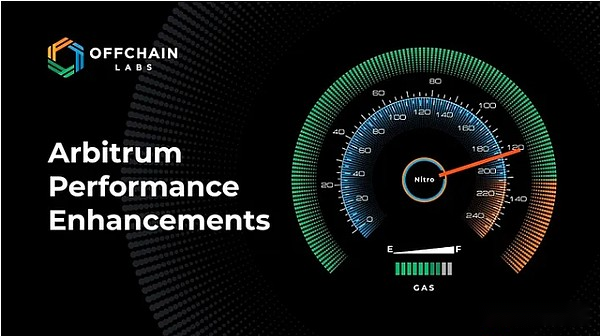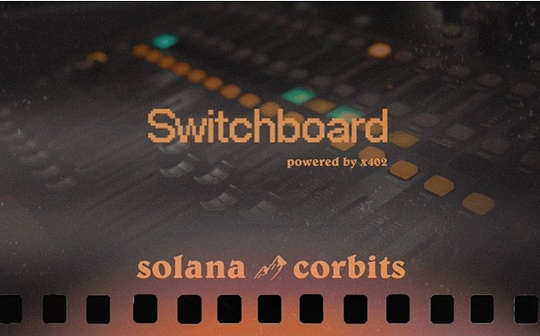
Source: Offchain Labs, Medium; Compilation: Deng Tong, Bitchain Vision
summary
Your chain, your rules.With Arbitrum being heavily adopted by those who build applications, infrastructure and Orbit Chains, we are working on various technological updates.These updates ensure that Arbitrum’s availability, interoperability and practicality continue to lead the adoption curve.Below is an overview of the roadmap we intend to provide to make your blockchain vision a reality.
Your chain, your rules.
As we set the (technical) route for the coming year, Offchain Labs always sticks to one of our core values: your chain, your rules.We always believe that blockchain is building a better Internet, an Internet with users and developers as the core.Using Arbitrum technology, builders can create powerful on-chain applications and a vibrant blockchain ecosystem.Users and institutions can manage themselves safely in the native digital economy.The community has autonomy.
With this in mind, we encourage everyone who interacts with the Arbitrum chain to be visionary, stay curious and move forward with confidence because we know this technology works.
Roadmap
When we launched Arbitrum on August 31, 2021 (Arbitrum Day), we addressed the first major hurdle in blockchain adoption: scalability.Over the past three years, we have continuously expanded, introduced new features and created the most technologically-completed and open blockchain platform.
As blockchain technology continues to expand its application scope in various industries and creates new industries, builders and users face challenges we are committed to solving: basic usability, driving adoption, and providing users with strong decentralized assurance.and a working infrastructure layer.
We bridge builder and user gaps by simplifying interaction with the Arbitrum chain, driving wider adoption.Interoperability is at the heart of us, allowing seamless navigation between chains using security technologies.We are abstracting the complex decision-making process about “what stack or chain to use” and creating a unified system.
It’s simple…your chain, your rules – lets you be free to innovate and build on trustworthy basis.

DevEx, User Experience and Adoption
To drive adoption, we need to make building on blockchain more expressive, efficient and easier for developers to use.Enter Stylus.
Stylus goes beyond the limitations of building on Ethereum, allowing developers to program in languages compiled to WebAssembly (WASM), such as Rust, C, and C++.
Solidity is an important part of our history and a big part of our future; Arbitrum’s support for EVM will not disappear.At the same time, we must realize that the number of Solidity developers and existing code is much smaller than that of traditional programming languages.Stylus makes us more inclusive and popular in our growing community of developers without damaging the experience of those who like EVM.
Stylus meets the growing demand for high-performance and secure smart contract languages while expanding the design space for increasingly expressive on-chain applications.In addition, Stylus is an efficient execution environment that directly saves gases on complex smart contracts.With Stylus, compute and memory costs can be greatly reduced.
And you don’t have to wait…
If you’ve been following the Arbitrum ecosystem for a while, you’ll know that some of the largest ecosystem launches are taking place on Arbitrum Day.(Well, technically, this year’s Arbitrum Day coincides with a holiday weekend in the United States, so we’ll watch it a few days later).
Arbitrum Stylus will be launched on Arbitrum Day on Arbitrum One and Nova mainnets, opening up a new stage of innovation in the entire ecosystem and making developers and user experience better.This is the largest execution layer upgrade in our industry ever.
Decentralization
The core philosophy of blockchain technology is to focus on decentralization and trustlessness, which is the core of everything we build at Offchain Labs and our future Arbitrum technology stack development plan.We are conducting a series of near-term and future developments to strengthen infrastructure and ensure that decentralization is not just a theoretical concept, but a practical reality in an ecosystem:
-
BoLD (2024):In addition to improving security, BoLD also supports secure decentralized verification, bringing Arbitrum closer to the second phase summary, the final phase defined by the L2 Beat phase.
-
Review timeout (second half of 2024):On the basis of BoLD, the review timeout limits the negative impact of duplicate review or offline sorter on the Arbitrum chain, which may be due to the attack.This provides stronger anti-censorship guarantees for the Arbitrum chain and improves access to user funds.
-
Decentralized sorter (probably in 2025):The decentralization of the Arbitrum sorter is the last step in the Arbitrum decentralization roadmap.The decentralized sorter distributes the responsibility for transaction sorting across a wider network of decentralized participants, reducing the risk of censorship attacks and improving reliability.
At Offchain Labs, we believe in the core spirit of blockchain technology and build products for decentralized applications.The features mentioned in this article can be adopted when the Arbitrum Orbit chain is available, or the Arbitrum DAO can vote to make any or all of these technological upgrades to the chains it manages (Arbitrum One and Arbitrum Nova).
Interoperability and scalability
The launch of Arbitrum Orbit opens a new era that enables teams to innovate solutions for their specific use cases.Arbitrum Orbit allows developers to customize their chains in any way they see fit.Our guiding principles are still: your chain, your rules.As builders focus on pushing boundaries, we are committed to achieving significant performance and interoperability improvements by solving fundamental engineering challenges.Our long-term strategy combines vertical and horizontal scaling efforts to enable developers to do more.
To unify the Arbitrum ecosystem (Arbitrum Orbit, Arbitrum One, Arbitrum Nova and Ethereum), we are building frictionless interoperability between chains based on fast communication.Optimistic Rollups offer the lowest cost and maximum flexibility, but the main obstacle to their scale-out is the confirmation delay introduced during the challenge period.Longer confirmation times mean that the worst-case cross-chain communication may take several days, or put trust on third parties.
We are working on several interoperability solutions to reduce these acknowledge latency and achieve horizontal scaling:
-
Quick Withdrawal (Q3, 2024):The upcoming fast withdrawal will enable the AnyTrust chain to bypass the confirmation delay and settle to its parent chain within minutes.These quick confirmations will enable peer L2 (or L3) to communicate with each other quickly, allowing developers to shard workloads and scale horizontally.
-
Chain Cluster (2025):Looking ahead to next year, we plan to further expand the developer’s toolbox by releasing the chain cluster to horizontally scale the Orbit chain.By allowing multiple Orbit chains to tightly combine with their ecosystem and infrastructure, chain clusters can be used to reduce cross-chain communication time from minutes to nearly instant.
Performance and efficiency
Since 2014, Arbitrum’s design has focused on performance and efficiency.Now, we hope to achieve the next enhancement of computing efficiency and performance by fundamentally optimizing execution.
-
Multi-client support (first half of 2025):Arbitrum Nitro is a node software that supports all Arbitrum-based chains, based on Geth (Golang implementation of Ethereum L1 execution specification).Since the Arbitrum Nitro debuted on August 31, 2022, many new execution layer (EL) client implementations have been launched or significantly improved – all with different unique value propositions and optimization goals.With the stability and quality of these alternative clients increasing, Offchain Labs has been committed to getting the Arbitrum stack ready to support alternative clients.
When we evaluate other clients, our main goal is to optimize block production speeds, which over time will (1) reduce hardware costs for existing node operators, and (2) improve the Arbitrum chain for securitySpeed limits (i.e. target throughput) pave the way.
We have begun testing and evaluating performance and benchmarks for multiple clients, including Paradigm’s newly released Reth 1.0, Eragon 3.0, and Netherlandsmind, with the goal of providing multi-client implementations available for production in 2025 and simplifying the process of adding other clients in the future.Although our current analysis shows that some alternative clients still lag behind Geth in some performance benchmarks, we believe that it is wise to prepare for Arbitrum adoption as these clients are further optimized.
-
Adaptive Pricing (first half of 2025):On the current EVM chain, gas limits are set to prevent nodes from overconsuming the scarce computing resources.This means that the gas limit of the chain is always the worst-case assessment, designed to prevent transaction loads using the node’s most constrained resources.
Compared to the worst-case approach, adaptive pricing takes into account the resources actually used and dynamically sets gas limits accordingly.With adaptive pricing, when a particular resource approaches its actual limit, the chain will only increase the fees and reduce resource consumption, rather than assuming the maximum value of resources that other transactions may use.
Adaptive pricing will further expand, allowing smart contracts to more efficiently use all the resources provided by the node and closer to the true gas limit.Overall performance will be improved without increasing the capacity of network nodes.Adaptive pricing can also increase flexibility to extreme flow modes such as inscriptions, where usage modes change thoroughly but temporarily, dynamically reducing gas limits only if necessary.
Zero knowledge proof
Offchain Labs is committed to scaling Ethereum with the best technology stack.By continuously pushing through the limits of existing technologies, we can find ways to improve and incorporate them into our scaling solutions.While Arbitrum Nitro is clearly the best stack to scale Ethereum from a stability, maturity, cost and security perspective today, our research team has identified several effective uses that can be combined with zero knowledge (ZK)the way.
In a 2023 Medium post and a recent presentation at EthCC and SBC, our chief scientist Ed Felten introduced a hybrid structure for how to integrate ZK into the Arbitrum chain.A specific active research area for studying ZK is:
-
ZK+Optimistic Mixed Proof: In Arbitrum Rollup and Dispute Resolution Agreements, ZK Proof can ultimately be used for instant acknowledgement assertions as an optional fast path to acknowledgement on the main chain.If no ZK proof is provided, the optimistic proof is still available.This enables users and developers on the Arbitrum chain to access very fast native interoperability as needed.
Looking to the future
At Offchain Labs, we are committed to creating solutions before problems arise.This year we have put in a huge effort to create three products available for deployment – Stylus, BoLD and Timeboost (click to learn more) – which is proof that Offchain Labs is at the forefront.These innovations will make blockchains more accessible and support the core values of decentralization.
We have a large number of researchers, engineers, product managers, partners, marketers and operations professionals who keep pushing the limits of this field.We build products to enable you to innovate, provided your infrastructure works properly.
There is more to be found on the roadmap, but we want to share some of the peaks you will start seeing in the near future.








